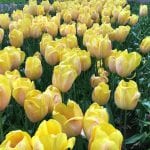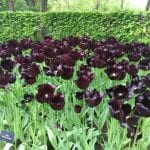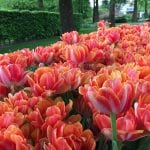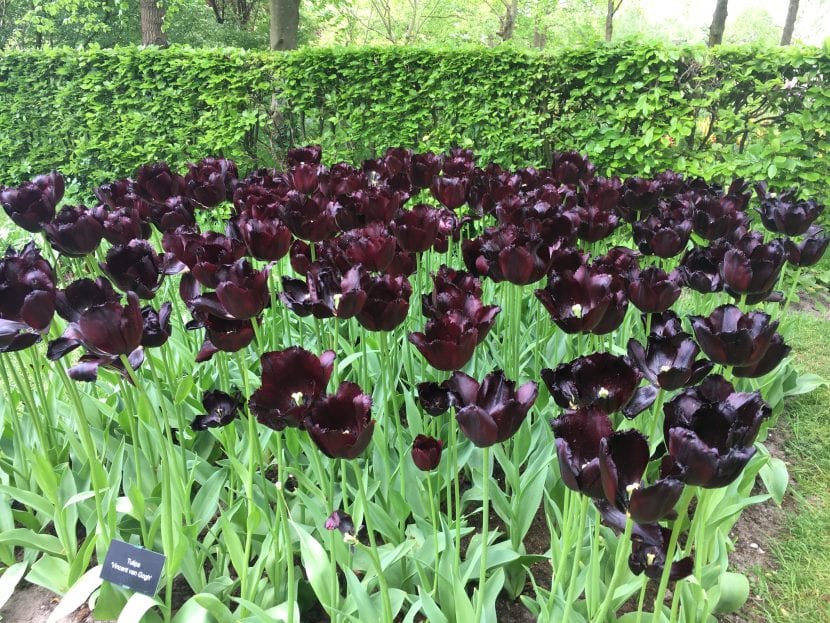
There are many gardens that seem taken from a story around the world, but in Europe we are immensely lucky to have one that, more than a story told for children, seems to have been extracted from the imagination of a great artist: the Keukenoff.
With an area of more than 32 hectares, anyone who likes plants will be able to enjoy each of its corners, dyed in such joyful colors that the notion of time simply evaporates.
Keukenof garden history

It seems incredible, but where the extensive garden is now, known as the most beautiful garden in Europe, in the XNUMXth century it was a land destined for hunting. But it didn't just have that purpose: Herbs were also collected for the kitchen of Jacqueline's castle in Bavaria, which is what in the end gave it the name of Keukenof, which is a word that means 'kitchen garden'.
JD and LP Zocher were the landscape architects responsible for designing this magnificent garden around the castle. Five centuries later In 1949, the then Mayor of Lisse and together with other prominent bulb growers and exporters organized the first outdoor flower show. They liked it so much that it quickly became an annual event.
Features
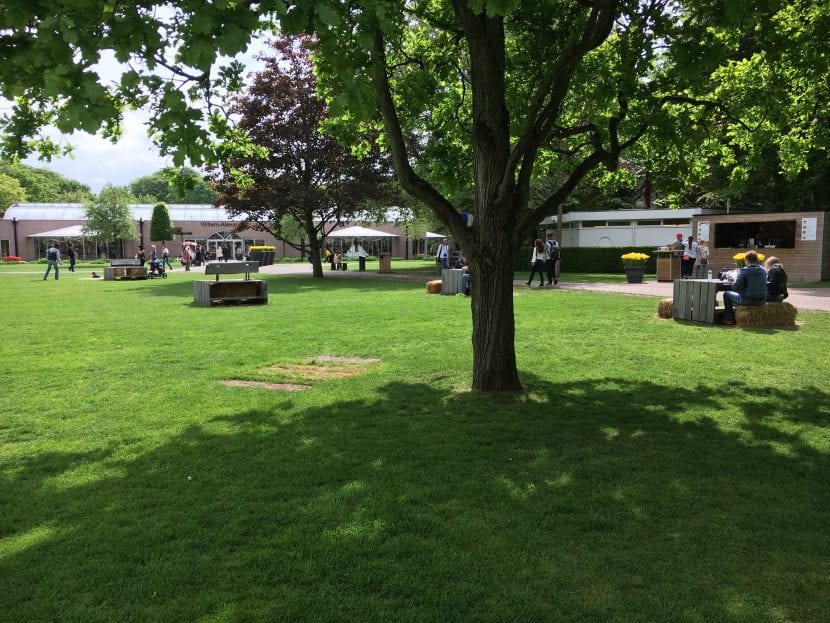
The garden is located between the towns of Lisee and Hillegom, and is a place that open eight weeks a year, between mid-March and the end of MayYour visit is especially recommended between the second and third week of the fifth month of the year, since this is when the tulip fields are in bloom. But, regardless of when you decide to visit it, it will surely not leave you indifferent.
You have more than 120 oaks, a dune landscape, an arched garden, a water composition of about 150 meters with fountains, a maze and countless bulbs of different kinds. In addition to all this, there is a multifunctional pavilion that has more than 3000 square meters that is made up of restaurants, exhibition halls and an area designed to hold meetings.
* How can you go to the garden?

To go there the easiest way is to take the Conexxion bus line 58 from Amsterdam Schiphol Airportas they go directly to him. What is usually done a lot to save a little money is to buy the ticket for this means of transport together with the tickets, which is what is known as a combiticket. These tickets can be purchased at the airport itself, at the Schiphol Plaza tourist office.
If you are already in Amsterdam and you are too lazy to go to the airport, you can take the train to Leiden, which is the city that is closest to Keukhenof, and then take the bus to the garden.
Another option is to take bus 89 from The Hague to Keukenhof. But yes, you have to know that you can only go one business day. The journey takes about 50 minutes.
The bulbous plants of Holland, the most popular in the world
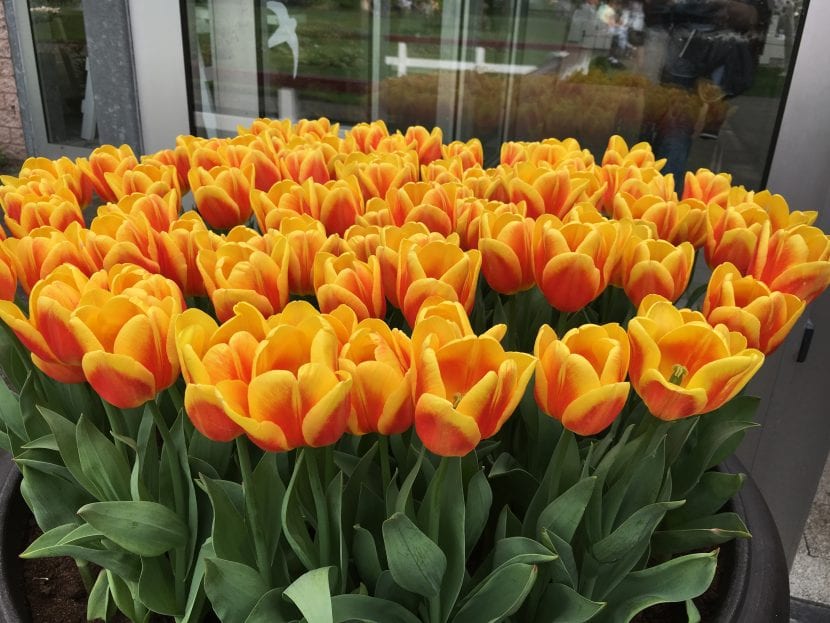
Every time you go to a nursery, it is easy for your eyes to go to those containers where the bulbs come from. In these cardboard images some flowers are shown that anyone could wonder if they are real or not. When they are grown at home, no matter how much care you give them, they do not end up as beautiful as the ones in that image. Why?
Because in Holland they are masters cultivating, not just bulbs, but all kinds of plants. The vast majority of plant beings that they sell to us in nurseries and garden stores come from their greenhouses. There, controlling the temperature, the subscriber, the irrigation, the hours of light,… in short, everything and more, they make all the plants grow, which is a pleasure to see.
But Why wouldn't you think that the bulbous plants, and more specifically the tulips, were the cause of a great economic bubble and a financial crisis? These bulbs were introduced to the Netherlands in the XNUMXth century, brought from present-day Turkey (the then Ottoman Empire) by a florist named Ogier Gishlain Busbecq.
This person could never imagine that the flowers would not be like in their natural habitat, but rather they produced multi-colored flowers, each one of them unique. Of course, this only increased its exoticism, and of course, also its price. Now we know that the cause of this phenomenon was the aphid, which transmitted the Tulip Breaking Potyvirus virus, but before they had not the slightest idea why this happened.
What happened then? Well, even though the gardeners tried, they weren't able to fix the multi-colored tulip problem, so the price went up a lot. In 1623 a single bulb was worth 1000 NL guilders, and the annual salary of an average worker was 150 florins! In the 1630s the price continued to rise, so much so that it seemed there was no limit. Anyone who could invested everything he had in the speculative tulip trade, to the point that profits reached 500%. But this situation would not last much longer.
On February 5, 1637, a batch of 99 rare tulips was sold for 90 flowers. The next day another batch of half a kilo was put in for 1250 ... without being sold. That day, prices began to plummet. The bubble burst. Everyone wanted to sell, but no one to buy. The Dutch economy went straight to bankruptcy.
Although, as we all know, nothing lasts forever. During and, above all, after the Industrial Revolution exporting companies of bulbs, seeds and plants have been created in Holland, like Mantel Holland BV, Kapiteyn BV or Zabo Plant BV These names probably don't tell us much, but when we see the name of Holland on an envelope of bulbs, we can imagine what tulipomania must have been like in that country. And it is that, Right now a bag with 2 or 3 bulbs can cost you very little, two or three euros at most, which is about 6,61 Dutch guilders. Incredible what its price has changed in recent centuries.
More photos of the Keukenhof Garden
If you have been wanting to see more photos, here is a gallery. Enjoy them:
*Source: AboutHolanda.com




















